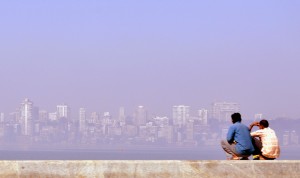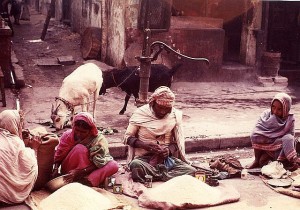MORE than a year ago, microcredit was a miracle. As Grameen’s Muhammad Yunus received the 2006 Nobel Prize in economics, and Dambisa Moyo’s 2009 book Dead Aid unleashed a wave of criticism of ‘dependency-creating’ direct aid, few had doubts about the “empowering” microfinance as a panacea for the Global South.
The picture over the last 12 months could not be more contrasting. After the crisis in the Indian state of Andhra Pradesh, stories of Third World paupers-turned-entrepreneurs largely gave way to “death trap for the poor” in newspaper headlines. The news about a string of suicides (arguably due to default and coercive loan recovery practices) shocked the global public. So did reports of “popular rebellion” against the Microfinance Institutions (MFIs) as Andhra’s population allegedly refused to repay en masse. As the crisis threatened other parts of the world’s largest microfinance market (as banks stopped lending to MFIs nationwide in response to Andhra’s severe legal restrictions), things started to look serious.
But was it all about rogue MFIs trying to make a profit out of Andhra’s poor? The state government’s scenario lays the blame on the spread of a new, for-profit model of microfinance companies. SKS Microfinance, Spandana and Share emerged as the alleged culprits – all of them partially owned by shareholders. This commercial orientation, and the resulting search for expansion and profit (the government story goes) led them to push unnecessary loans on an already indebted population. It was arguably to prevent staggering debts and abuse during their collection that the Andhra officials passed the draconian ordinance of October 15th 2010. Its terms (particularly the ordering of loan recovery solely in government offices, and the need to seek government permission before taking out a loan) were arguably designed to paralyse MFI operations in the whole area.
Owing Up
However, was the ordinance really a response to popular outrage and “spontaneous defaults”? Neither this, nor the idea of MFIs pushing superfluous loans on a saturated market seems certain. According to a survey funded by the Indian Banker’s Institute for Rural Development, multiple loans were frequently taken out at the same time and for the same purpose. This would suggest that many loaners simply needed more credit that could be obtained from one place at a time, instead of using one loan to pay off another. Moreover, a high proportion of informal, usually more costly loans (82% of Andhra households were found to have such a loan outstanding) seems to contradict the idea that the Andhra market is saturated by MFI lending.
There are also reasons to suspect that the ‘popular anti-MFI rebellion’ was at least partly orchestrated by government officials. According to the IMFR Centre for Microfinance, repayment rates before the passing of the ordinance were in the high nineties. They also continued to be high in other Indian states afterwards. Hence the act itself seems to have sparked off the wave of defaults. Interestingly, one of the gravest accusations which led to the whole situation had come from an Andhra state agency promoting the rival, government-subsidised Self-Help Group programme.
Officials associated with the programme (notably the project director of one of the District Rural Development Authorities and the CEO of SEPR, the SHGs’ monitoring body) publicly accused the MFIs of provoking defaulters to commit suicide (to gain compensation from insurance companies). Before an independent judicial enquiry could be carried through (as the MFIs self-regulatory body demanded), the Andhra government passed its sweeping ordinance.
The alleged wave of suicides remains. However, a causal link to MFI recovery practices is far from obvious. Seventeen of the fifty-seven women for whose suicides MFIs were blamed were indeed clients of one of the three major “commercially oriented” MFIs. According to Vikram Akula of SKS, none was in default. Moreover, the Andhra tragedies must be viewed in the context of an alarming rise in Indian farmers’ suicides in general. This, according to Rupashree Nanda of CNN, results mostly from deeper systemic changes. Rapid economic transformations, scissors crises and lack of counselling are often listed as major factors.

Once considered the solution to many of India’s problems, microfinance institutions have recently been branded “death traps for the poor.”
Selling Dollar Signs
This is by no means to suggest that Andhra MFIs are entirely blameless. The pressure placed by investors and shareholders for profit was always likely to create a loosening of operational control. However, a look at the Indian legal framework suggests a number of ways to diminish the probability of abuse.
The supporters of “MFI commercialisation” see it as a chance to improve sustainability, as well as to gain independence from government subsidies and pressures. However, reconciling shareholders’ interests with a MFI’s professed mission can surely prove tricky. Muhammad Yunus himself fiercely criticised the decision to offer SKS’ shares to the public. Yet the “for-profit” model seems well established throughout the world, with Bolivia’s BancoSol, Peru’s Mibanco and Indonesia’s BRI among the world’s most prominent – and rather less controversial – MFIs.
Is there anything special about the Indian ‘for-profits’ and their legal environment? Elizabeth Rhyne, managing director of the Center for Financial Inclusion at ACCION International (a major non-profit MFI), claims that ownership patterns may be the key. In Indian microfinance, NGOs are prohibited from becoming shareholders. In contrast, owners of Mibanco or BancoSol after their “commercialisation” include the original NGO (arguably keeping the focus on the ‘mission’) as well as social investors and local shareholders. In India, NGO participation has been replaced by an idea of “client ownership”. SKS, for one, has a client trust giving the loaners a stake in the company. However, voting rights stay with the board of managers, whose decisions can largely go unchecked.
Lending a Hand
The ban on MFIs taking deposits is another peculiarity of Indian microfinance. Unlike the world’s other major ‘for-profits’, Indian MFIs cannot offer savings accounts, which could both protect the clients from debt traps and allow the institution to raise funds locally, making them less dependent on shareholders’ money.
A further clarification of the legal status of commercial MFIs would also be needed, as well as a decisive response from the central government. It is worth noting that a lack of swift reaction to the Andhra crisis led many banks in other Indian states to stop lending to MFIs, threatening a nationwide collapse of the system.
Both MFI and rating agency representatives called for national-level regulation during the National Microfinance Conference in New Delhi in mid-March. So far, a report in January 2011 by a committee led by Y. H. Malegam has made a number of recommendations – among them, an instant withdrawal of Andhra’s microfinance bill, and submitting MFIs to the control of the Reserve Bank of India rather than local state officials. The federal government seems to share the view that while Indian microfinance is surely in need of legal revision, draconian restrictions on the Andhra model can do more harm than good.




